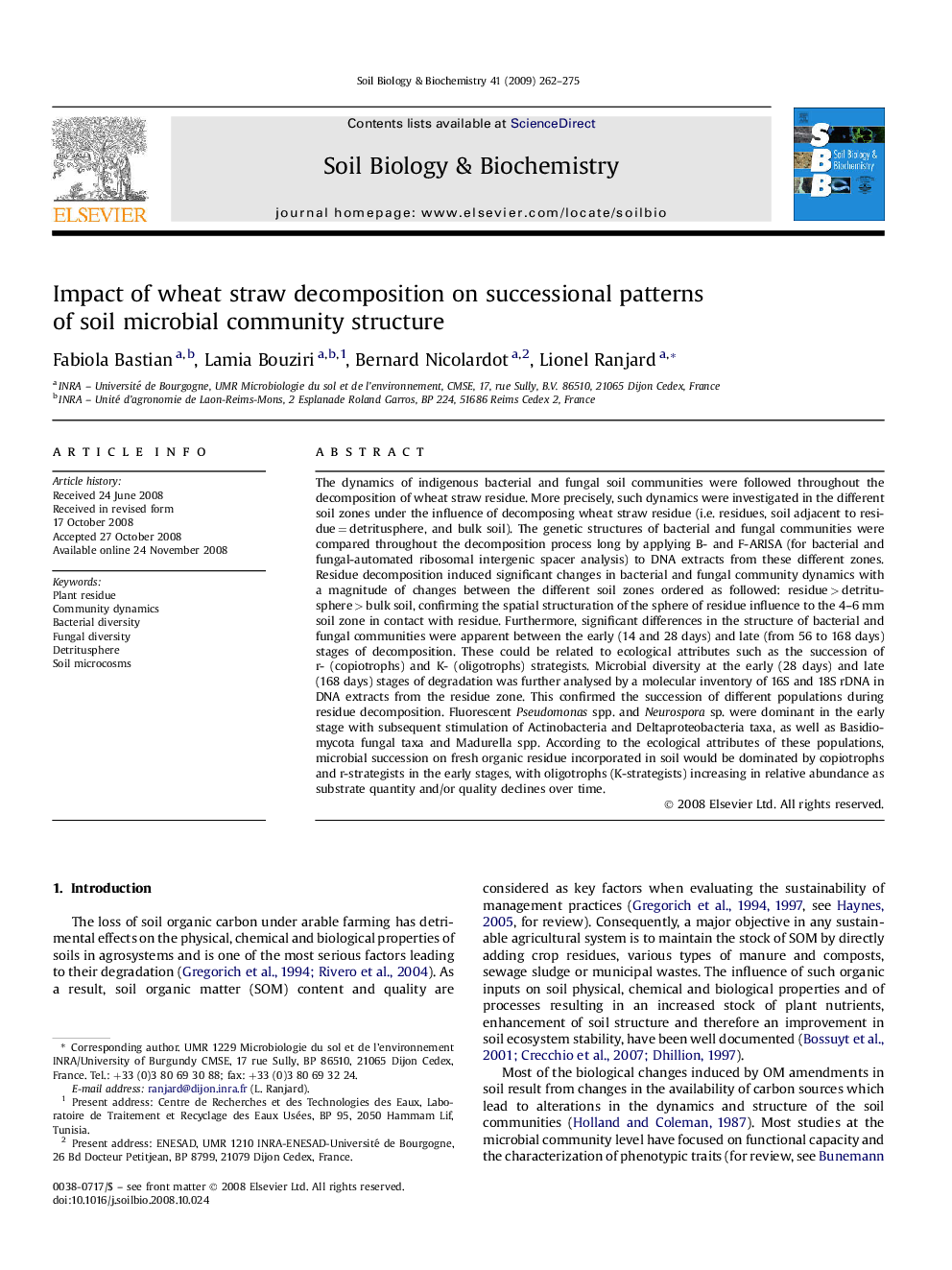| کد مقاله | کد نشریه | سال انتشار | مقاله انگلیسی | نسخه تمام متن |
|---|---|---|---|---|
| 2026126 | 1070020 | 2009 | 14 صفحه PDF | دانلود رایگان |
عنوان انگلیسی مقاله ISI
Impact of wheat straw decomposition on successional patterns of soil microbial community structure
دانلود مقاله + سفارش ترجمه
دانلود مقاله ISI انگلیسی
رایگان برای ایرانیان
کلمات کلیدی
موضوعات مرتبط
علوم زیستی و بیوفناوری
علوم کشاورزی و بیولوژیک
دانش خاک شناسی
پیش نمایش صفحه اول مقاله

چکیده انگلیسی
The dynamics of indigenous bacterial and fungal soil communities were followed throughout the decomposition of wheat straw residue. More precisely, such dynamics were investigated in the different soil zones under the influence of decomposing wheat straw residue (i.e. residues, soil adjacent to residue = detritusphere, and bulk soil). The genetic structures of bacterial and fungal communities were compared throughout the decomposition process long by applying B- and F-ARISA (for bacterial and fungal-automated ribosomal intergenic spacer analysis) to DNA extracts from these different zones. Residue decomposition induced significant changes in bacterial and fungal community dynamics with a magnitude of changes between the different soil zones ordered as followed: residue > detritusphere > bulk soil, confirming the spatial structuration of the sphere of residue influence to the 4-6 mm soil zone in contact with residue. Furthermore, significant differences in the structure of bacterial and fungal communities were apparent between the early (14 and 28 days) and late (from 56 to 168 days) stages of decomposition. These could be related to ecological attributes such as the succession of r- (copiotrophs) and K- (oligotrophs) strategists. Microbial diversity at the early (28 days) and late (168 days) stages of degradation was further analysed by a molecular inventory of 16S and 18S rDNA in DNA extracts from the residue zone. This confirmed the succession of different populations during residue decomposition. Fluorescent Pseudomonas spp. and Neurospora sp. were dominant in the early stage with subsequent stimulation of Actinobacteria and Deltaproteobacteria taxa, as well as Basidiomycota fungal taxa and Madurella spp. According to the ecological attributes of these populations, microbial succession on fresh organic residue incorporated in soil would be dominated by copiotrophs and r-strategists in the early stages, with oligotrophs (K-strategists) increasing in relative abundance as substrate quantity and/or quality declines over time.
ناشر
Database: Elsevier - ScienceDirect (ساینس دایرکت)
Journal: Soil Biology and Biochemistry - Volume 41, Issue 2, February 2009, Pages 262-275
Journal: Soil Biology and Biochemistry - Volume 41, Issue 2, February 2009, Pages 262-275
نویسندگان
Fabiola Bastian, Lamia Bouziri, Bernard Nicolardot, Lionel Ranjard,